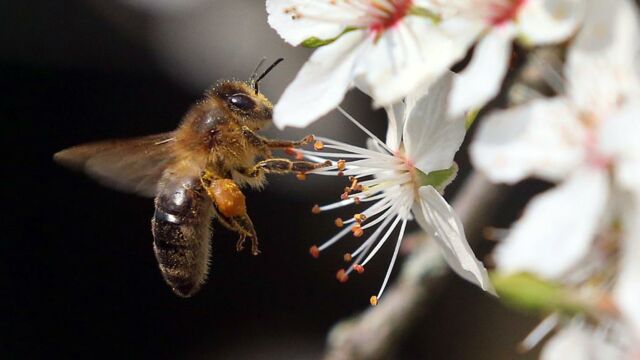Scientists have taught bees to identify a case of COVID-19 in seconds

According to a press release from Wageningen University, Dutch scientists have trained bees to identify the coronavirus using their sense of smell.
The research was carried out on more than 150 bees in the bio-veterinary research laboratory of Wageningen University.
Discover our latest podcast
Trained through a reward cycle
The scientists trained the bees by giving them a treat—a sugar water solution—each time they were exposed to the smell of a coronavirus-infected mink. Each time the bees were exposed to an uninfected sample, they did not receive a reward (a process known as Pavlovian conditioning).
Finally, the bees were able to identify an infected sample within seconds and then stick out their tongues like clockwork to collect the sugar water.
More under this adMore under this adBees are not the first animals to detect coronavirus by smell. Researchers have also trained dogs to distinguish between positive and negative coronavirus samples from human saliva or sweat with a fairly high level of accuracy. A small German study showed that dogs could identify positive samples of COVID-19 94% of the time.
An alternative solution in countries where facilities are too scarce?
This is because the metabolic changes caused by the coronavirus give the body fluids of an infected person a slightly different odour than those of an uninfected person.
More under this adMore under this adBut the researchers are not convinced that animals are the best way to detect COVID-19 cases outside the laboratory. Holger Volk, a veterinary neurologist, told Nature:
Nobody is saying they can replace a PCR machine, but they could be very promising.More under this adMore under this ad
At the very least, some animals could be useful for identifying COVID-19 in places or countries where high-tech laboratory equipment is scarce or inaccessible.
Scientists in Wageningen, for example, are working on a prototype machine that could automatically train several bees at a time and then use their skills to test for coronavirus aerosols (tiny virus-laden particles) in the surrounding environment.
More under this ad